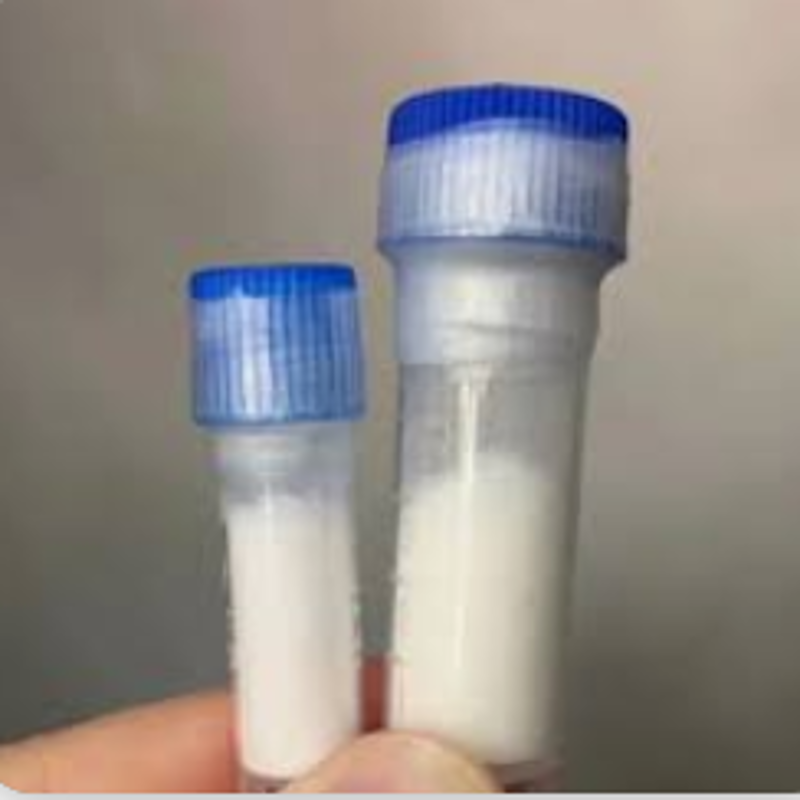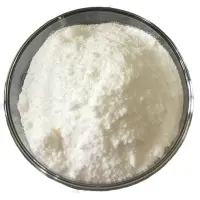-
Categories
-
Pharmaceutical Intermediates
-
Active Pharmaceutical Ingredients
-
Food Additives
- Industrial Coatings
- Agrochemicals
- Dyes and Pigments
- Surfactant
- Flavors and Fragrances
- Chemical Reagents
- Catalyst and Auxiliary
- Natural Products
- Inorganic Chemistry
-
Organic Chemistry
-
Biochemical Engineering
- Analytical Chemistry
-
Cosmetic Ingredient
- Water Treatment Chemical
-
Pharmaceutical Intermediates
Promotion
ECHEMI Mall
Wholesale
Weekly Price
Exhibition
News
-
Trade Service
Click on the blue word to follow us
The central nervous system (CNS) contains a large number of cell types, including neurons, astrocytes, oligodendrocytes, vascular endothelial and parietal cells, and immune cells
.
Most immune cells are members of the mononuclear phagocytes system, including macrophages, monocytes, and traditional dendritic cells (cDCs
).
Tissue-resident macrophages (TRMs) in the brain include microglia (BAMs), which are distributed in the brain parenchyma to support neurogenesis, development, and function, which are located in the CNS boundary region, which mainly play barrier function and immunomodulatory roles
.
Peripheral mononuclear phagocytes patrol the brain boundaries and provide steady CNS with continuous immune surveillance to monitor for signs of infection, malignancy, or tissue damage, but the infiltration of CNS by a large number of peripheral immune cells is also a typical pathogenic process
.
In November 2022, Burkhard Becher of the Institute of Experimental Immunology at the University of Zurich, Switzerland, published an article in the journal Neuron provides a comprehensive overview of the CNS mononuclear phagocytes system and highlights its role in the disease (Figure 1).
Figure 1.
Function of monocytes of the central nervous system
1
Monocytes in homeostatic CNS
.
The CNS boundary region consists of the meninges, choroid plexus (CP), and perivascular space, isolated from the parenchyma by the
blood-brain barrier (BBB).
The relative abundance and diversity of CNS immune cells can reflect the difference in barrier permeability in the boundary region, which increases with increasing distance from the parenchyma (Figure 2), and such compartmentalization protects neural tissue from immunopathological influences and also confers relative "immune privileges"
on CNS.
Figure 2.
The complexity of immune cells is positively correlated with the barrier permeability of the CNS
—originate in the embryonic yolk sac, enter and colonize the CNS parenchyma early in embryonic development, and the maintenance of the microglial population in adult CNS depends on self-renewal
.
Microglia have significant spatiotemporal heterogeneity, and their status depends on the local microenvironment and is fine-tuned
for specific needs within the niche.
Microglia play a key role in CNS function, guiding neural circuit formation, participating in synapse formation and pruning in the developing brain, maintaining neurogenesis, myelination, and regulating vascular function, cerebral blood flow, and even directly controlling sympathetic output
in the adult brain.
BAMs are the second largest number of white blood cells in the CNS after microglia and have the same
origin as microglia.
BAMs subsets can be distinguished
according to their location around dura mater, CP, pia mater, and blood vessels.
Perivascular, pia mater BAMs maintain numbers through self-renewal, while dural and CP BAMs are partially dependent on peripheral monocytes for input
.
MHCIIhi BAMs are enriched in the dura mater and have a higher turnover rate than MHCIIlow BAMs and can be replaced
by myeloid cells derived from bone marrow in the skull.
The function of BAMs in different boundary regions is specific, for example, CP BAMs regulate iron uptake/homeostasis, CSF homeostasis, Th2 response, innate immune response, and glycosaminoglycan metabolism; Perivascular and leptomeningeal BAMs play a role in angiogenesis, vascular maintenance, or nutrient absorption; Dural BAMs are associated with
antigen (Ag)-specific immunomodulatory function.
In the CNS-infiltrating phagocytes-immune surveillance homeostatic CNS that control the CNS boundary, the vast majority of nonresident CNS mononuclear phagocytes are confined to the CNS boundary and stay
only briefly.
The main function of these phagocytes (i.
e.
, monocytes and cDCs) is to participate in immune surveillance, protecting the brain from pathogen invasion and stopping abnormal cell growth
.
The number of cDCs in healthy CNS is scarce, and it is responsible for presenting cerebrospinal fluid-derived Ag to T cells
.
Brain cDCs are mainly derived from the bone marrow of the skull and are divided into cDC1 enriched in CP and cDC2
enriched in meninges.
Unlike other MHCII+ cells, cDCs can cause encephalitic T cells to enter the brain parenchyma
by presenting myelin Ag.
Like cDCs, classical Ly6Chi and non-classical Ly6Clow monocytes are rarely found in
healthy brains.
Classical monocytes, located mainly in the dura mater, are involved in the renewal of MHCIIhi BAMs, on which pathogen recognition receptors (PRRs) are expressed, which may be the first sentinels of infection or malignancy
.
Non-classical monocytes are mainly located in cerebral blood vessels, and their lifespan is longer than that of classical monocytes, and they are involved in the monitoring and immune regulation
of the CNS vascular system.
2
CNS mononuclear phagocytes in disease
The relative immune privilege of CNS may drive brain malignancy development and hinder the antitumor immune response.
The "immunoquiescent" state of the CNS parenchyma may promote immunosuppressive brain tumor microenvironment (TME) formation
.
Brain TME is composed of lymphocytes and myeloid cells, which have an inhibitory effect on peripheral T cell initiation or in situ immunity, hindering antitumor immunotherapy
.
Monocytes typically make up 30% of tumor mass, and the effect of tumor-associated macrophages (TAMs, including microglia and BAMs), monocytes, and cDCs on tumor progression is unclear
.
Comprehensive immunophenotyping of brain TME showed that some features of TAMs were specific
for cancer type and stage.
The dual origin of the TAM population, i.
e.
, embryo-derived microglia, BAMs, and monocytes-derived aggressive TAMs, adds complexity
to anti-tumor therapy.
As TRMs, resident TAMs also have tissue protective properties and are thought to promote immunosuppression and tumor evasion
.
Functional profiling of TAMs shows that microglia have pro-angiogenic and T cell inhibitory abilities
.
In tumor development, the overprotective effect of resident TAMs can be counterproductive
.
For example, microglial tissue repair-related signals in mouse gliomas are upregulated and are associated with
reduced survival.
Aggressive TAMs promote tumor growth, and their increase is associated with
poor prognosis.
In recurrent gliomas, aggressive TAMs dominate the tumor microenvironment, and their tumorigenic mechanisms include the release of angiogenic factors, growth factors, proteases, and anti-inflammatory factors
.
DCs control T cell responses in CNS malignancies, have advantages in activating T cells compared with other APCs, and are potential targets for anti-tumor vaccine therapy
.
At present, the DC vaccine has achieved certain results
in phase III clinical trials of glioblastoma.
Autoimmune neuroinflammation: Immunosuppressive properties protect the brain from hyperimmune diseases such as autoimmune neuroinflammation
.
Activated phagocytes may have beneficial effects by clearing tissue debris and releasing neurotrophic factors, but may also translate to cytotoxic phenotypes
when exposed to pro-inflammatory cytokines derived from meningeal inflammation.
Multiple sclerosis (MS) is the most common chronic inflammatory CNS demyelinating disease
.
The phenotype of phagocytes has been shown to vary with different stages of lesion of MS, and in addition, the same subset of phagocytes may also play different roles
at different stages.
Using fate mapping combined with single-cell analysis, researchers can distinguish between blood-derived and embryo-derived phagocytes during inflammation and identify specific features
of different subpopulations.
Resident macrophages protect the CNS from inflammation-induced tissue damage
.
"Reactive" microglia have been observed in a variety of CNS diseases, and the activated phenotype of microglia may be the result
of functional adaptations that limit tissue damage when inflammatory.
Microglia are very sensitive to changes in the host microbiota, and the gut-brain axis and lung-brain axis add complexity
to the neuroimmune response in health and disease.
Due to the inability to specifically target BAMs, there is currently limited understanding of their role in neuroinflammation, and existing research suggests that they may promote an encephalitis-causing immune response
.
In contrast to resident macrophages, aggressive MdCs drive neuroinflammation, mediating tissue damage
.
Activation of mononuclear phagocytes is a prerequisite for
the emergence of clinical symptoms of experimental autoimmune encephalomyelitis (EAE).
Circulating monocytes are recruited into the CNS and differentiate into MdCs, rapidly outnumbering TRMs
.
The differentiation of MdCs is strictly dependent on IFN-γ, and its pathogenic role depends on GM-CSF
.
MdCs do not participate in the pathogenic process by direct interaction with T cells, but can further drive autoimmune T cell responses
by releasing inflammatory cytokines.
DCs improve or worsen disease
by directly regulating the response of encephalogenic T cells.
CNS DCs can present Ag to infiltrating cells at the CNS border, or migrate to secondary lymphoid organs to initiate autoreactive T cells or induce tolerance (Figure 3).
Figure 3: Immunogenicity and tolerability characteristics of CNS phagocytes
summary
In tumor or inflammatory lesions, it is difficult to phenotypically distinguish inflammatory microglia from tumor lesion-associated microglia, as well as monocytes recruited from the periphery and differentiated into MdCs, and the functional significance of these changes in the context of disease still needs to be further elucidated
.
Inducible genetic tools with high specificity and penetrance target CNS-resident and infiltrating phagocytes populations, advance the resolution of these problems, and resolve the specific functions
of CNS phagocytes in development, health, and disease.
At present, in tumors and neuroinflammatory diseases, clinical targeting and treatment effects are still not ideal
.
Immunotherapy for brain tumors suppressed by checkpoints has also not yielded meaningful clinical outcomes
.
Phagocytes may be a new therapeutic target to advance clinical intervention in CNS pathology
.
【References】
1.
https://doi.
org/10.
1016/j.
neuron.
2022.
10.
005
The images in the article are from references







